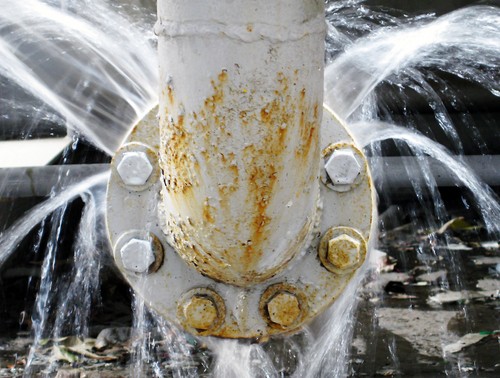Over the lifespan of a shell and tube heat exchanger, the tubes will undergo massive amounts of stress. Normal use involves rapidly flowing liquids through and around the tubes. When other factors, like the potential for maldistribution or built-up sediment, are taken into account, there are many ways a shell and tube heat exchanger can wear out.
Investing in high-quality materials like stainless steel will certainly lengthen the life of an exchanger. However, after a while, there will come a time when parts need to be changed out or the whole exchanger needs to be replaced. While this is to be expected, it’s better to be aware of how well the equipment is holding up rather than waiting for a problem that could hold up production, create more work than necessary and ultimately eat your profits.
“Radiotracers can be used to detect leaks while the heat exchanger is online.”
One excellent way to keep an eye on the health of your exchanger and detect any issues that could get worse quickly is through leak detection. Leaks can be detrimental to a shell and tube heat exchanger and are never good for the company. Additionally, leaks can lead to cross-contamination, fouling or equipment damages, so it’s crucial to avoid them.
There are several methods of leak detection available to manufacturers who want to give their equipment a checkup.
Radiotracers
One of the dilemmas of conducting leak detection tests is determining whether to take the exchanger offline and lose production time. If there turn out to be no leaks and the exchanger is in good shape, it could be argued that the manufacturer lost time and revenue for little gain. Luckily, there is one effective way to search for leaks without affecting the process or product, and without taking the exchanger offline.
Radiotracers can be used to detect leaks while the heat exchanger is still in use, according to the International Atomic Energy Agency. They are comprised of several elements:
- A radioisotope, typically inserted into whichever side of the exchanger has the highest pressure.
- An injection detector, which monitors the flow of the radioisotope through the exchanger from the tube side inlet where it is mounted.
- A leak detector positioned at the shell outlet that monitors the lower pressure side to see if the radioisotope ends up there.
Usually, inserting any foreign substances into an exchanger while processes are running is frowned upon. Even slight changes could damage or alter the final product or have negative effects on the exchanger itself. However, only a miniscule amount of radioisotope is required to effectively detect leaks. The IAEA explained that, in some cases, just 10 to 17 grams is enough to detected by the leak detector.
Conductivity and pH
Conductivity is the measure of a substance’s ability to carry an electric current. Some fluids and objects have high conductivity, while others don’t have any at all. The various fluids in an exchanger will generally have differing levels of conductivity.
Another way to distinguish between substances is with pH. This is the measure of how basic or acidic a fluid is, which will also differ between the materials flowing through the tubes and shell.
“Finding leaks while they’re small is crucial to preventing production issues.”
Both of these measurements can aid in the monitoring of where the fluids are traveling within the exchanger, according to Emerson Process. Using analyzers or sensors on the low-pressure side will help detect when a substance with a particular pH or measure of conductivity is making its way into a part of the exchanger it shouldn’t be.
While this can be highly effective in detecting leaks and their origins, there is one shortcoming to this method: Organic substances and water often have similar levels of conductivity as well as similar pH levels. Therefore, if an exchanger is processing organic liquids and using water as the heat-transfer medium, a different leak detection method would be more beneficial.
Finding leaks while they’re small, before they cause any major damage or problems, is crucial to keeping an exchanger in good shape and preventing production issues later on. There are many ways to monitor the health of an exchanger. What’s important is finding the method that suits your processes best.
If you find that you need a new shell and tube heat exchanger, speak to the experts at Enerquip. Their team of in-house engineers will work closely with you and your company to determine the best exchanger design for your operation.
Want more? Keeping read – stopping leaks in their tracks – part 2

